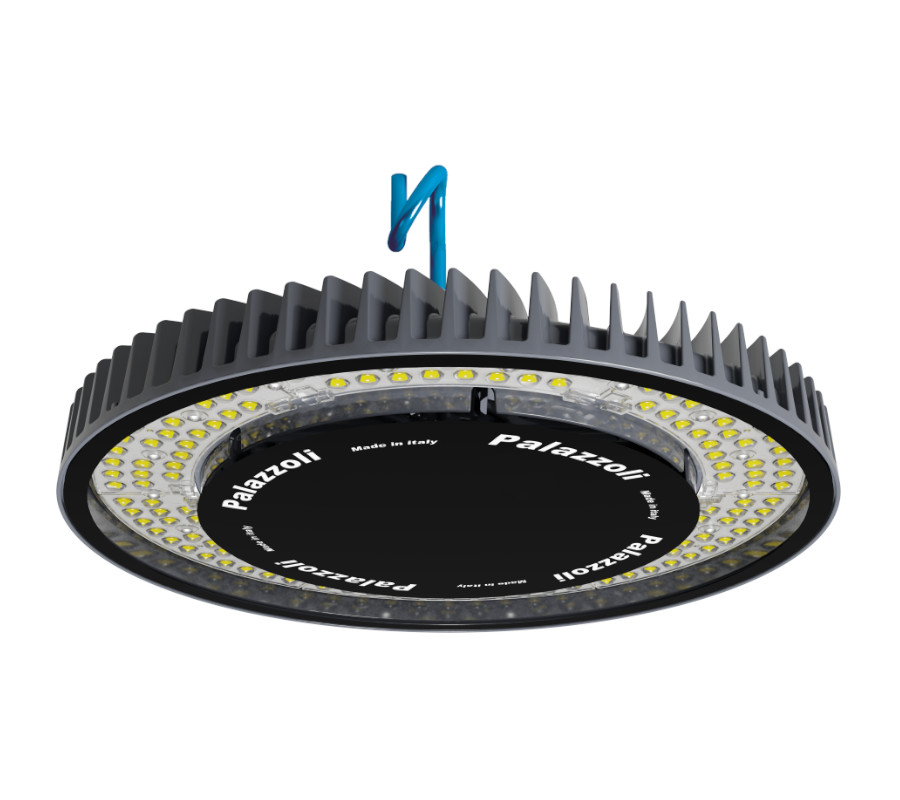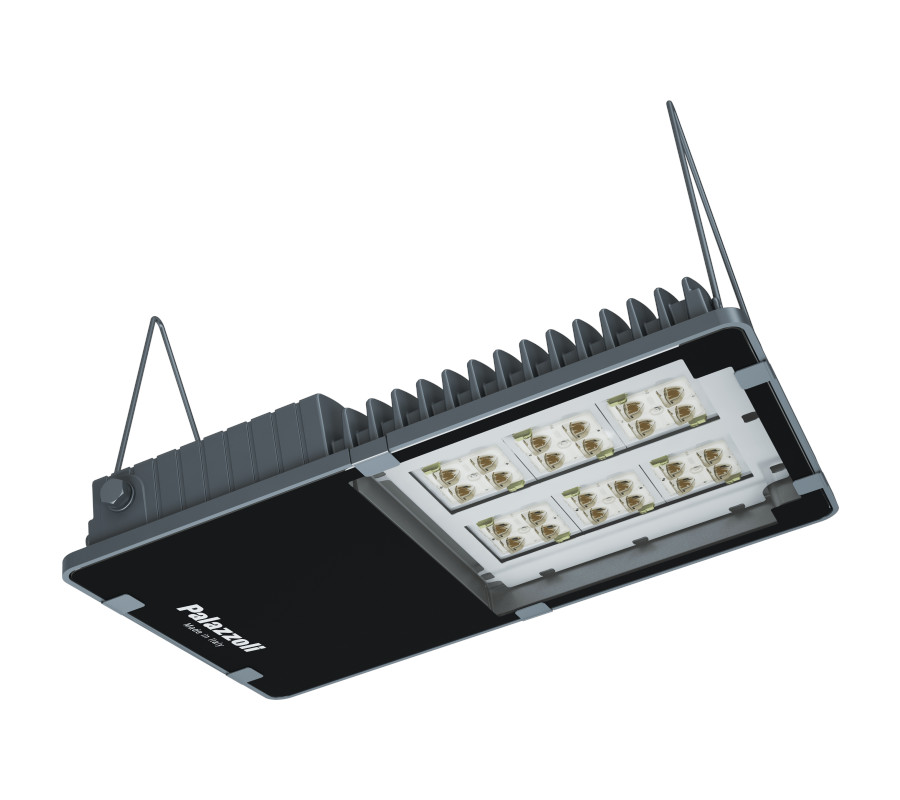DALI Protocol
The DALI protocol, acronym of Digital Addressable Lighting Interface, is a communication protocol developed for digital lighting control.
The DALI protocol enables the switching on and off of individual or group luminaires and the regulation of light intensity in a digital way.
Palazzoli luminaires with the DALI protocol have the suffix «DA» after the code, for example 810630DA
Palazzoli DALI Label

For the power supply of electronic components and the data transmission of luminaires, a two-conductor cable is sufficient (recommended from 1.5 mm2, 15 AWG);
It is not necessary to respect the polarity of conductors (+/-), unlike systems with 0-10 V or 1-10 V control.
The maximum distance between two DALI devices can be 300 m, the system topology is free: linear and star type connections can be combined, but ring closure must be avoided.
The DALI Bus System
A single DALI bus system provides:
- 64 addresses for the driver
- 64 addresses for the controllers
DALI devices can be programmed to operate in groups.
This offers great flexibility, since the lighting system can be reconfigured by simple software reprogramming, without the need to physically modify the wiring.
The grouping of devices involves:
- 16 groups for driver; each device can be a member of any combination of the 16 groups;
- 32 groups for controllers; each device can be a member of any combination of the 32 groups;
- 32 groups for input device instances; each instance may be a member of up to 3 of these groups;
Improve your skills on lighting management and efficiency with palazzoli learning quizzes.
Subscribe to MyPalazzoli, and check your consent for "product and services communication", from April you will receive the quiz newsletter!

